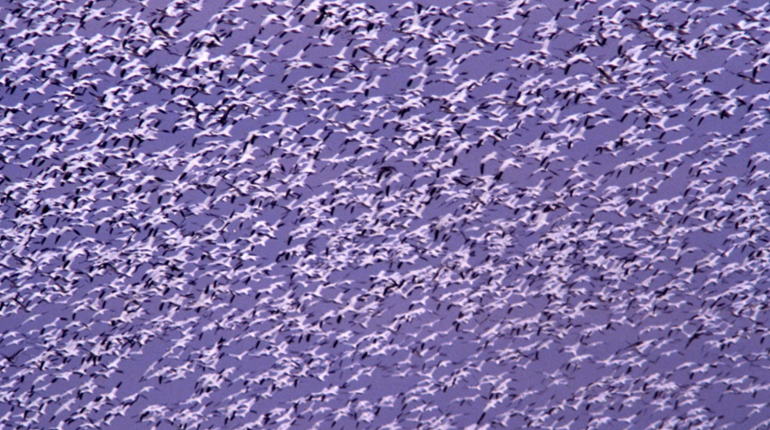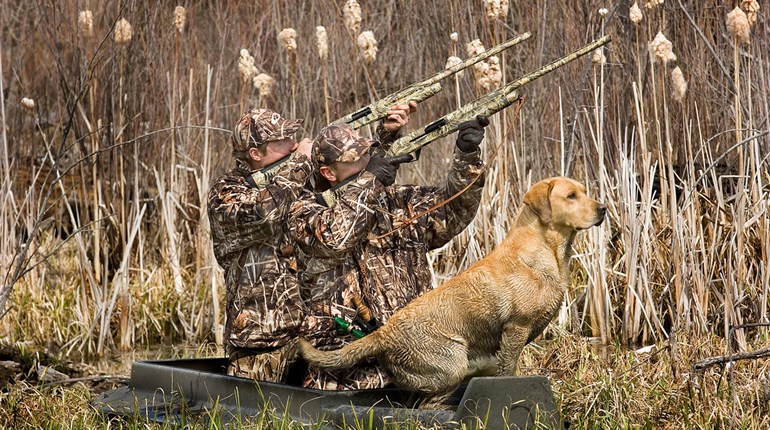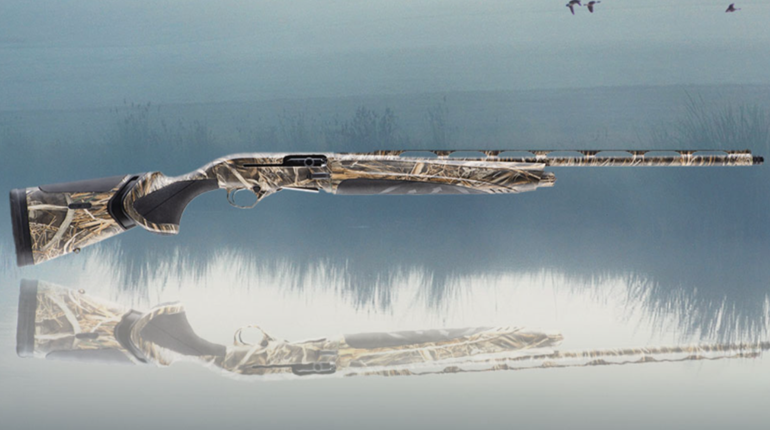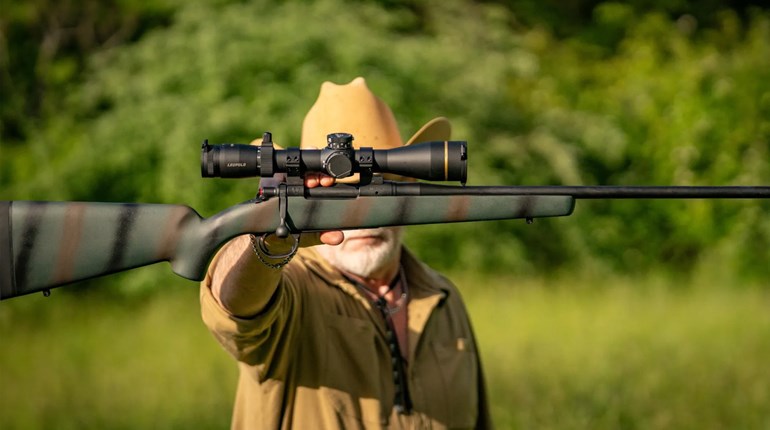
Based on this year's record-breaking duck population survey, the U.S. Fish and Wildlife Service (USFWS) has once again proposed liberal season lengths and bag limits for the 2014-2015 season. The framework is largely similar to last year, but for one major change: The nationwide canvasback limit of two birds daily drops to just one duck in all four U.S. flyways. This is a big deal given King Can's significance to passionate 'fowlers, but it must be kept in perspective.
"If you look at the harvest record, I think it's only been twice in the modern era that we've had a two-canvasback nationwide limit," said John Devney, vice president of U.S. policy for Delta Waterfowl. "Canvasbacks barely met the threshold for a two-duck limit last year. So, when we saw the estimate drop this year, the move to one canvasback was pretty well anticipated."
Canvasbacks are down 13-percent over 2013's estimate (787,000 cans in 2013 versus 685,000 this year). This is concerning, sure, but some hunters are asking whether the decline is significant enough to warrant going to one bird daily.
"The canvasback model is very prescriptive—the population either meets the threshold for a two-duck limit or it doesn't," Devney said. "It's unlike the adaptive harvest management models used for mallards, black ducks, pintails and scaup. With cans, it's all math: The sum of the observed breeding population, estimates of nesting production and recruitment, and estimated hunter-harvest must exceed a target level to reach a limit of two birds."
Why then does the canvasback model differ so greatly from other species?
"There are a variety of factors, but frankly it's probably because when the model was implemented nobody envisioned we'd ever shoot two canvasbacks again," Devney said. "And with canvasbacks, especially, when you double the limit it tends to significantly increase the harvest. Last year [with a two-duck daily limit] the harvest was 160,000, up from 117,000 the prior year [with a one-duck daily limit]."
So, like it or not, the USFWS had reason to reduce the canvasback limit. Let's just pray we don't return to the days of my youth, in which entirely closed season were the norm.
Additional regulatory frameworks are as follows:
Atlantic Flyway (Connecticut, Delaware, Florida, Georgia, Maine, Maryland, Massachusetts, New Hampshire, New Jersey, New York, North Carolina, Pennsylvania, Rhode Island, South Carolina, Vermont, Virginia and West Virginia):
• Ducks: A hunting season is proposed of not more than 60 days between Sept. 27, 2014, and Jan. 25, 2015. The proposed daily bag limit is 6 and may include no more than 4 mallards (2 hens), 4 scoters, 3 wood ducks, 2 redheads, 2 scaup, 1 black duck, 2 pintails, 1 canvasbacks, 1 mottled duck, and 1 fulvous whistling duck. The proposed daily bag limit of mergansers is 5, only 2 of which may be hooded mergansers. In states that include mergansers in the duck bag limit, the daily limit is the same as the duck bag limit, only 2 of which may be hooded mergansers.
• Geese: For light geese, states will be able to select a 107-day season between Oct. 1, 2014, and March 10, 2015, with a daily bag limit of 25 birds and no possession limit. Seasons for Canada geese would vary in length among states and areas depending on the populations of birds that occur in those areas. The daily bag limit will be 5 birds in hunt zones established for resident populations of Canada geese. In hunt zones established for migratory populations, bag limits will be 5 or fewer and vary among states and areas. For Atlantic brant, the season length may be 30 days with a daily bag limit of 2.
Mississippi Flyway (Alabama, Arkansas, Illinois, Indiana, Iowa, Kentucky, Louisiana, Michigan, Minnesota, Mississippi, Missouri, Ohio, Tennessee and Wisconsin):
• Ducks: A hunting season is proposed of not more than 60 days between Sept. 27, 2014, and Jan. 25, 2015. The proposed daily bag limit is 6 and may include no more than 4 mallards (2 hens), 3 wood ducks, 1 mottled duck, 2 redheads, 3 scaup, 2 pintails, 1 black duck, and 1 canvasback. The proposed daily bag limit of mergansers is 5, only 2 of which may be hooded mergansers. In states that include mergansers in the duck bag limit, the daily limit is the same as the duck bag limit, only 2 which may be hooded mergansers.
• Geese: Generally, seasons for Canada goose would be held between Sept. 27, 2014, and Jan. 31, 2015, and vary in length among states and areas. States would be able to select seasons for light geese not to exceed 107 days with 20 geese daily between Sept. 27, 2014, and March 10, 2015; for white-fronted goose the proposed season would not exceed 74 days with a 2-bird daily bag limit or 88 days with a 1-bird daily bag limit between Sept. 27, 2014, and Feb. 15, 2015; and for brant it would not exceed 70 days with a 1-bird daily bag limit or 107 days with a 1 bird daily bag limit between Sept. 27, 2014, and Jan. 31, 2015.
Central Flyway (Kansas, Nebraska, North Dakota, Oklahoma, South Dakota, Texas, and portions of Colorado, Montana, New Mexico and Wyoming):
• Ducks: Duck season frameworks are between Sept. 27, 2014 and Jan. 25, 2015. The daily bag limit is 6 ducks, with species and sex restrictions as follows: 5 mallards, no more than 2 of which may be females; 3 wood ducks, 3 scaup, 2 pintails, 2 redheads, 1 canvasback, and 1 mottled duck. Mottled ducks may not be harvested during the first 5 days of the regular season in Texas. In the High Plains Mallard Management Unit (roughly west of the 100th Meridian), a 97-day season is proposed, and the last 23 days can start no earlier than Dec. 13, 2014. A 74-day season is proposed for the remainder of the Central Flyway.
• Geese: States may select seasons between Sept. 27, 2014 and Feb. 15, 2015, for dark geese and between Sept. 27, 2014, and March 10, 2015, for light geese. East-tier states are able to select a 107-day season for Canada geese with a daily bag limit of 8. For white-fronted geese, east-tier states will be able to select either a 74-day season with a daily bag limit of 2 birds or an 88 day season with a daily bag limit of 1 bird. In the west-tier, states may select a 107-day dark goose season with a daily bag limit of 5 birds. In the Western Goose Zone of Texas, the state could select a 95-day season with a daily bag limit of 5 dark geese (including no more than 1 white-fronted goose). For light geese, all states would be able to select a 107-day season with a daily bag limit of 50.
Pacific Flyway (Arizona, California, Idaho, Nevada, Oregon, Utah, Washington and portions of Colorado, Montana, New Mexico and Wyoming):
• Ducks: States are allowed a 107-day general duck season between Sept. 27, 2014, and Jan. 25, 2015. The proposed daily bag limit is 7 ducks and mergansers, including no more than 2 female mallards, 2 redheads, 2 pintails, 1 canvasback and 3 scaup. For scaup, the season length can be 86 days, which may be split according to applicable zones/split duck hunting configurations approved for each state.
• Geese: States may select a 107-day season between Sept. 27, 2014 and Jan. 25, 2015 for Canada geese, and between Sept. 27, 2014, and Mar. 10, 2015 for light geese and white-fronted geese. Proposed basic daily bag limits are 20 light geese, 10 white-fronted geese, and 4 Canada geese. There are many exceptions to the basic bag limits and season structures for geese in many states, so consult state regulations for specific details. For brant, the proposed season lengths are 16 days in Oregon and Washington and 30 days in California, with a 2-bird daily limit. Washington and California are able to choose seasons in each of the two zones described in state regulations.




































